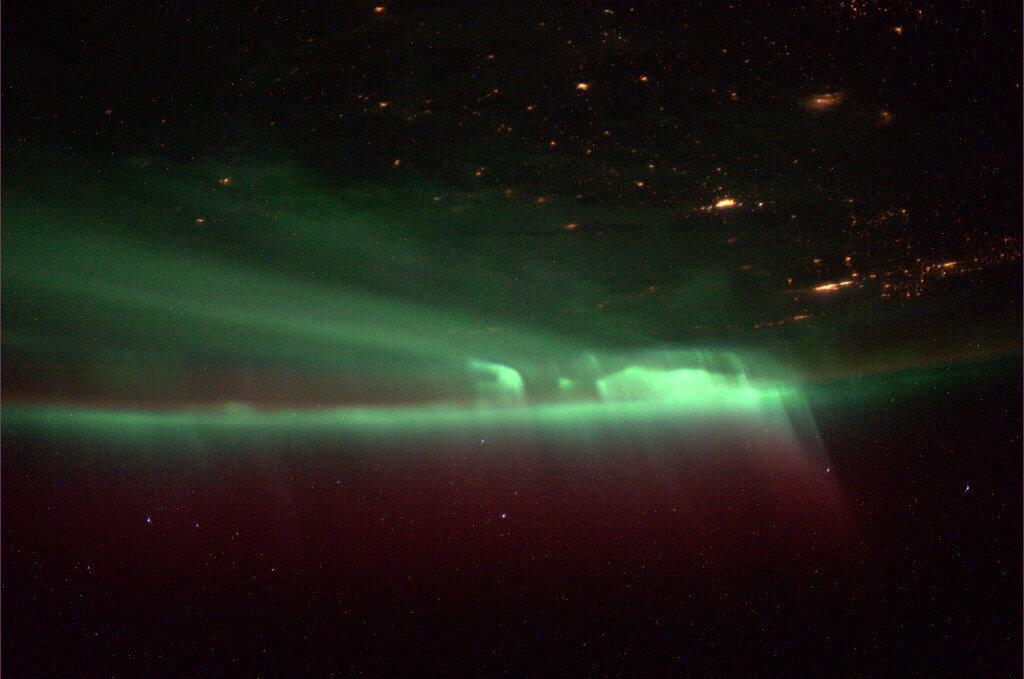
Image credit: NASA
The Northern Lights, as captured by astronaut Mike Hopkins, aboard the International Space Station, from Oct. 9, 2013. The northern lights are caused by collisions between fast-moving particles (electrons) from space and the oxygen and nitrogen gas in our atmosphere. These electrons originate in the magnetosphere, the region of space controlled by Earth’s magnetic field. As they rain into the atmosphere, the electrons impart energy to oxygen and nitrogen molecules, making them excited. When the molecules return to their normal state, they release photons, small bursts of energy in the form of light. Astronauts have used hand-held cameras to photograph the Earth for more than 40 years. Beginning with the Mercury missions in the early 1960s, astronauts have taken more than 700,000 photographs of the Earth. Today, the space station continues the NASA tradition of Earth observation from human-tended spacecraft.
Advertisement





